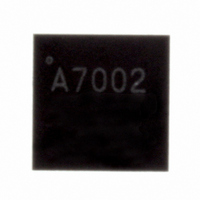HSDL-7002 Lite-On Electronics, HSDL-7002 Datasheet - Page 8

HSDL-7002
Manufacturer Part Number
HSDL-7002
Description
IC ENCODER/DECODER IRDA 16-QFN
Manufacturer
Lite-On Electronics
Type
Infrared Encoder/Decoderr
Datasheet
1.HSDL-7002.pdf
(11 pages)
Specifications of HSDL-7002
Applications
Fax, Modems, Pagers
Voltage - Supply, Analog
2.7 V ~ 5.5 V
Voltage - Supply, Digital
2.7 V ~ 5.5 V
Mounting Type
Surface Mount
Package / Case
16-QFN
Lead Free Status / RoHS Status
Lead free / RoHS Compliant
Other names
516-1702-2
Available stocks
Company
Part Number
Manufacturer
Quantity
Price
Company:
Part Number:
HSDL-7002
Manufacturer:
CONEXANT
Quantity:
201
Part Number:
HSDL-7002
Manufacturer:
AGILENT
Quantity:
20 000
Recommended Reflow Profile
The reflow profile is a straight-line representation of a
nominal temperature profile for a convective reflow sol-
der process. The temperature profile is divided into four
process zones, each with different DT/Dtime temperature
change rates. TheDT/Dtime rates are detailed in the above
table. The temperatures are measured at the component
to printed circuit board connections.
In process zone P1, the PC board and HSDL-7002 castella-
tion pins are heated to a temperature of 160°C to activate
the flux in the solder paste. The temperature ramp up rate,
R1, is limited to 4°C per second to allow for even heating
of both the PC board and HSDL-7002 castellations.
Process zone P2 should be of sufficient time duration (60
to 120 seconds) to dry the solder paste. The temperature
is raised to a level just below the liquidus point of the
solder, usually 200°C (392°F).
8
Process Zone
Heat Up
Solder Paste Dry
Solder Reflow
Cool Down
160
120
255
230
220
200
180
25
80
0
HEAT
R1
P1
UP
50
Symbol
P1, R1
P2, R2
P3, R3P3, R4
P4, R5
SOLDER PASTE DRY
R2
P2
100
150
Process zone P3 is the solder reflow zone. In zone P3, the
temperature is quickly raised above the liquidus point of
solder to 255°C (491°F) for optimum results. The dwell time
above the liquidus point of solder should be between 20
and 60 seconds. It usually takes about 20 seconds to as-
sure proper coalescing of the solder balls into liquid solder
and the formation of good solder connections. Beyond a
dwell time of 60 seconds, the intermetallic growth within
the solder connections becomes excessive, resulting in
the formation of weak and unreliable connections. The
temperature is then rapidly reduced to a point below the
solidus temperature of the solder, usually 200°C (392°F), to
allow the solder within the connections to freeze solid.
Process zone P4 is the cool down after solder freeze.
The cool down rate, R5, from the liquidus point of the
solder to 25°C (77°F) should not exceed 6°C per second
maximum. This limitation is necessary to allow the PC
board and HSDL-7002 castellations to change dimen-
sions evenly, putting minimal stresses on the HSDL-
7002 endec.
R3
DT
25°C to 160°C
160°C to 200°C
200°C to 255°C
(260°C at 10 seconds max)
255°C to 200°C
200°C to 25°C
Above 220 C
MAX 260C
REFLOW
SOLDER
60 sec
MAX
P3
200
R4
COOL DOWN
P4
R5
250
Maximum
DT/Dtime
4°C/s
0.5°C/s
4°C/s-6°C/s
-6°C/s
t-TIME
(SECONDS)
300





















